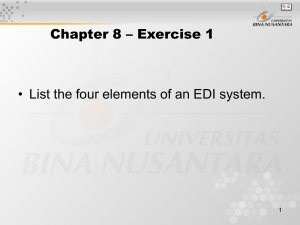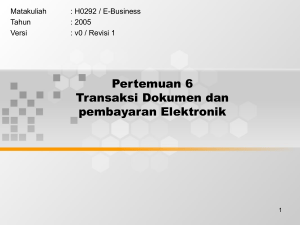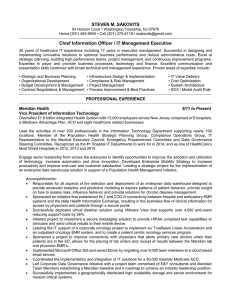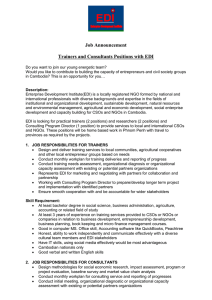Secondary Curriculum, Instruction & EL SERVICES EDI Overview
advertisement
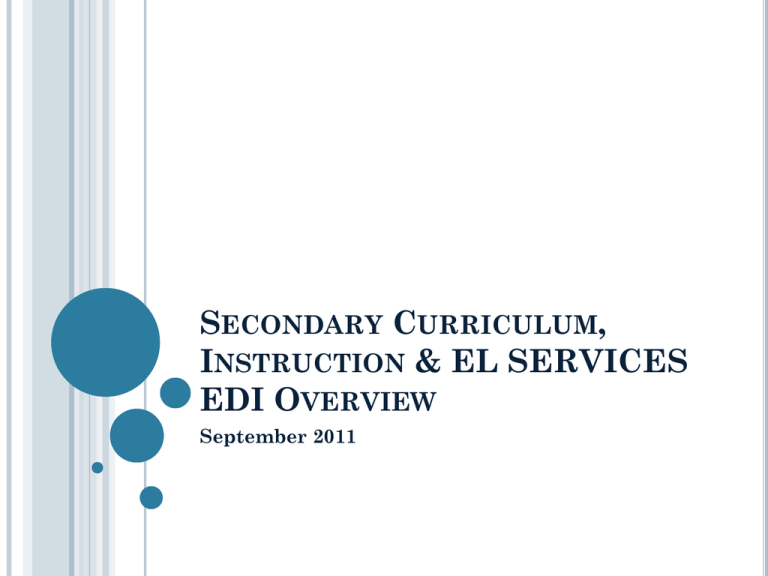
SECONDARY CURRICULUM, INSTRUCTION & EL SERVICES EDI OVERVIEW September 2011 PRESENTATION OUTCOMES Participants will be able to define the term Explicit Direct Instruction. Participants will be able to explain the advantages of an effective, highly structured lesson. Participants will be able to describe the five phases of EDI. WHAT IS EXPLICIT DIRECT INSTRUCTION? Direct instruction is a step-by-step instructional sequence that can also be recursive, affording the teacher the opportunity to return to a previous phase based on need. The cognitive load is gradually transferred from the teacher to the student. Orientation Presentation Guided Practice Closure Independent Practice WHAT ARE THE ADVANTAGES OF A WELL STRUCTURED LESSON? Every time teaching improves . . Students learn more The lesson framework is clear and well defined The instructional approach produces a high percentage of successful students The instructional approach is effective (students learn) and efficient (students learn quickly) The lesson planning process is independent of grade level, content or student’s age The lesson is more effective for students with disabilities and at-risk students The lesson is more effective with students living in poverty WHY ARE WE USING THIS EDI MODEL Based on: Four million state-level student test results Analysis of 2.3 million student assignments Observation of twenty-five thousand teachers Survey of over one hundred thousand educational stakeholders to collect perception data LETS REVIEW Two Minute Pair Share What are the five phases of an Explicit Direct Lesson? Discuss at least one advantage of a well structured lesson that applies to your school EDI LESSON DESIGN COMPONENTS 1. Orientation Phase: Lesson Objectives: - Learning Objective - Language Objective - Social Objective Activate Prior Knowledge - Universal Experience - Subskill Review Communicate expected results Check for Understanding WHAT IS A SOCIAL OBJECTIVE AND WHY ARE WE USING IT? To enable students to successfully function in a collaborative environment, teachers must explicitly teach these interactive structures in their classrooms through the use of social objectives and direct instruction. We Do Collaboratively is a component of the Guided Practice Phase Secondary students need to be taught collaboration routines Twenty-first century skills are promoted more effectively when social norms are taught explicitly and monitored continuously for impact on student learning EDI LESSON DESIGN COMPONENTS 2. Presentation Phase “I Do”: Teacher provides explicit definition or rule Teacher provides examples and non-examples Content is either procedural or declarative Three methods of instruction: - Model - Explain - Demonstrate Check for Understanding EDI LESSON DESIGN COMPONENTS 3. Guided Practice Phase “We Do” “You Do Collaboratively” “You Do” Check for Understanding LETS REVIEW 5 minute Pair Share List the three types of Objectives outlined during the Orientation Phase. What are the two ways to Activate Prior Knowledge? What are the two types of knowledge that can be taught? What are the three methods of instruction? EDI LESSON DESIGN COMPONENTS 4. Closure Phase Teacher reviews the lesson objectives Teacher completes one final check for understanding of the learning objective and the language objective 80% mastery Adjust the next lesson Adjust the independent practice LET’S REVIEW 3 Minute Pair Share What are the 3 stages of Guided Practice? What is the purpose of the “We Do Collaboratively” stage for - the teacher - the student Why should a teacher complete a closure activity before having students engage in independent practice? EDI LESSON DESIGN COMPONENTS 5. Independent Practice Phase Students practice what they were taught Independent Practice matches the Learning and Language Objective Students are not expected to “teach themselves” during independent practice Students take responsibility for their learning Activities must be meaningful and focused. PRESENTATION OUTCOMES Participants will be able to define the term Explicit Direct Instruction. Participants will be able to explain the advantages of an effective, highly structured lesson. Participants will be able to describe the five phases of EDI. Address each outcome on your exit slip

